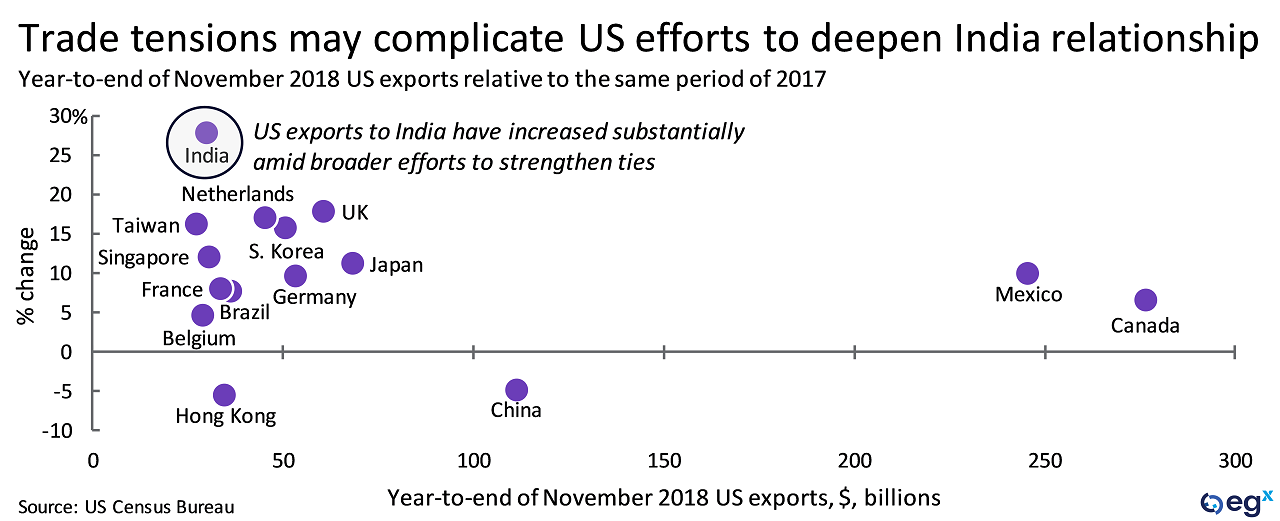Tensions flare in Kashmir
On February 14, a suicide bombing in the India-administered area of Kashmir killed at least 40 paramilitary forces, prompting Indian airstrikes at a Pakistani-based terrorist camp. Pakistan responded with another retaliatory strike across the Line of Control. This marked the most significant conflict between the two countries since the 1971 war, though Pakistan's release of a captured Indian pilot has eased tensions, making a full-blown war unlikely.
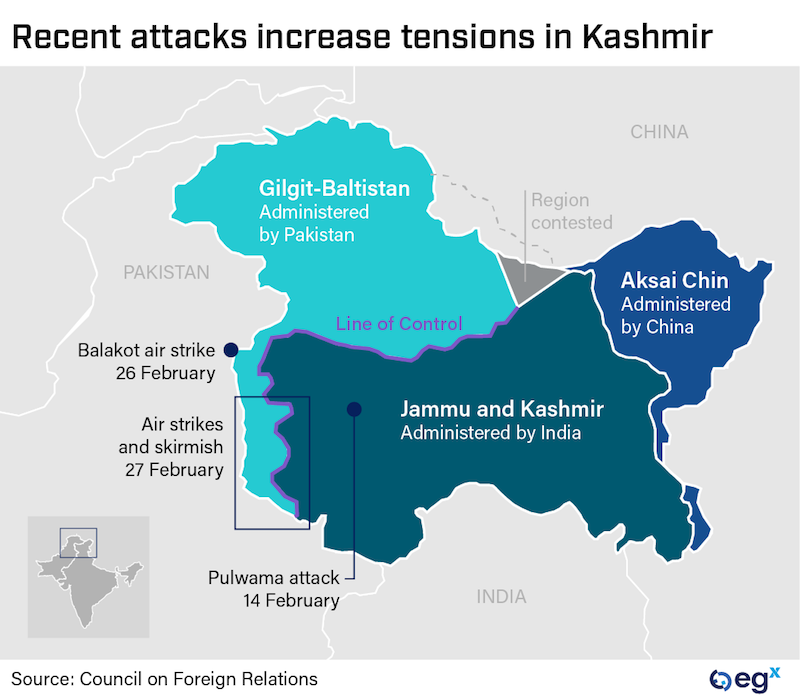
The recent escalation stands as the bloodiest conflict in the growing terrorist-related violence in the Indian state of Jammu and Kashmir. Counter-insurgency operations in the state have intensified since the ruling Bharatiya Janata Party withdrew its support from the local coalition government and established direct Central Government rule in the state.
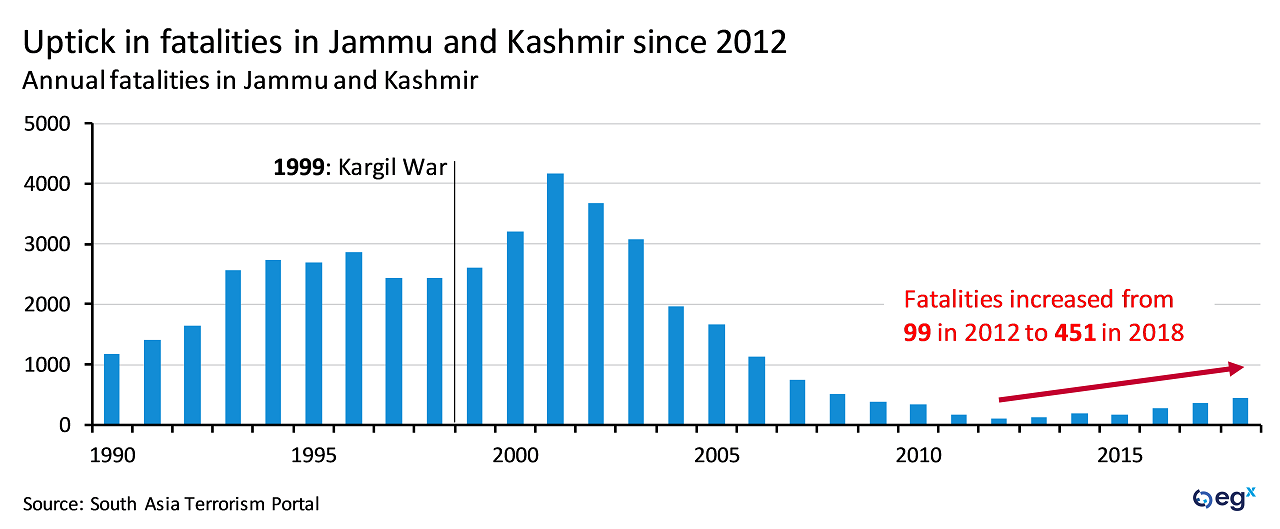
India's strong response to the escalation in Kashmir will help bolster Modi's tough image on national security issues vis-à-vis the opposition parties and benefit his reelection campaign ahead of a close general election race in April.
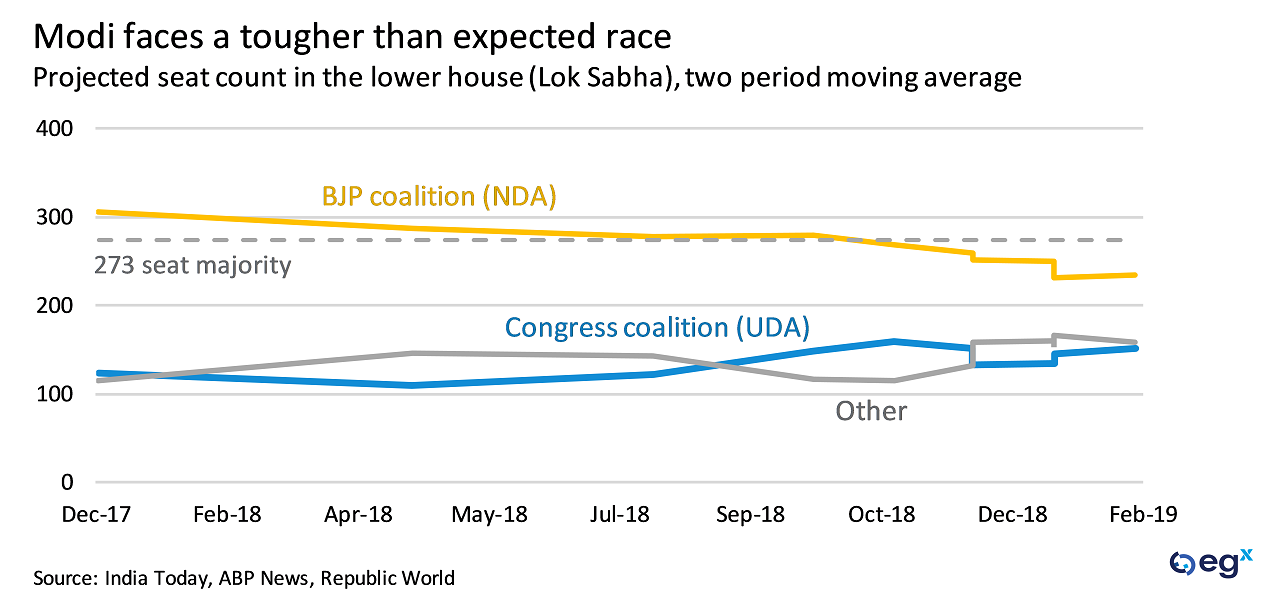 A difficult road to peace
A difficult road to peace
Despite the recent easing of tensions, the underlying drivers of the Kashmir conflict are unlikely to cease in the near-term. Modi has emphasized that he will not negotiate with Pakistan until it deals with militants based within its borders, and the Indian public broadly agrees with him.
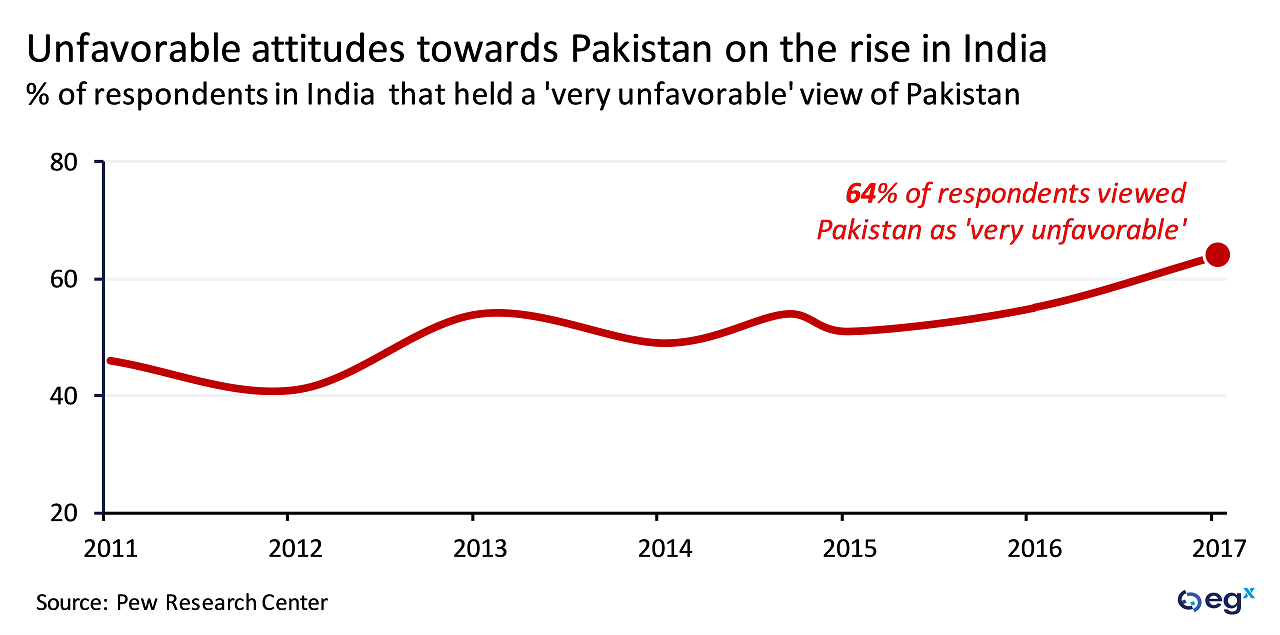
Pakistan will also continue its support of Kashmiri militant groups operating within its borders. Despite coming under increasing international pressure and threat of sanctions against its teetering economy, the Pakistani army is unlikely to relinquish its support of proxy groups operating in India and Afghanistan.
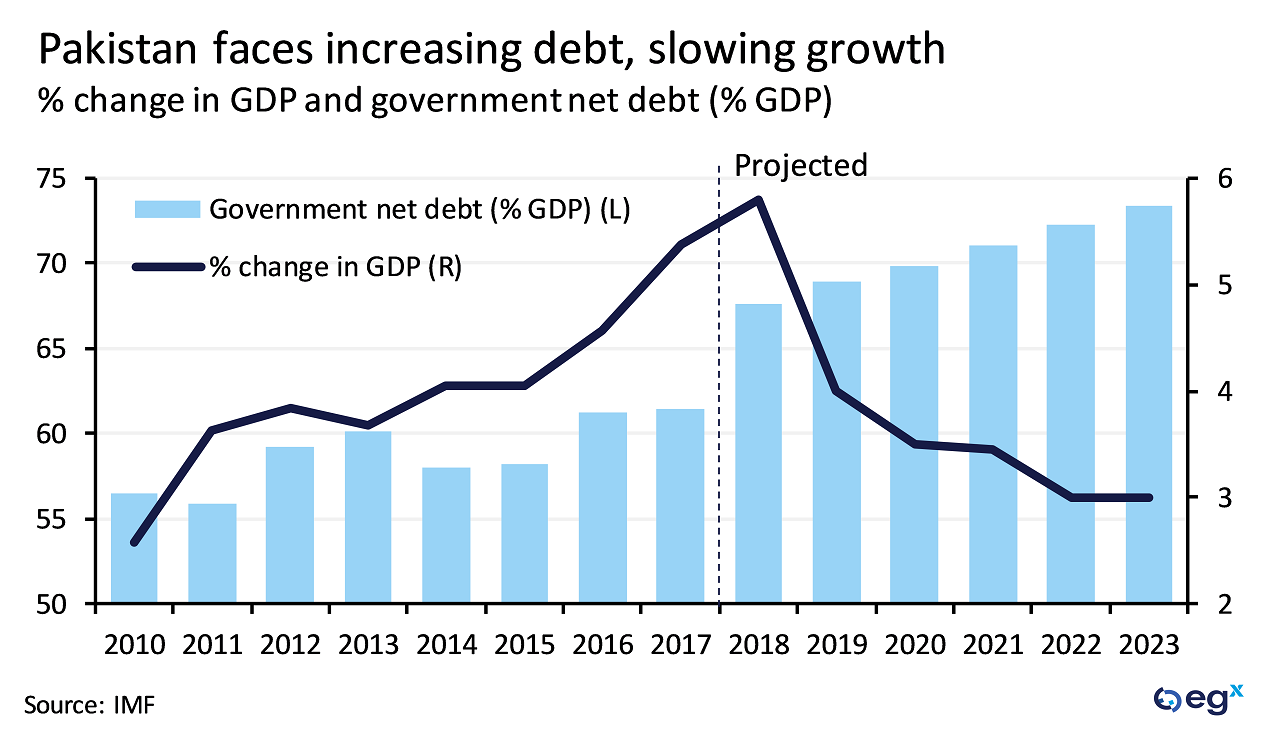
China has also become increasingly drawn into the issue due to its growing economic and strategic support of Pakistan, including the massive China-Pakistan Economic Corridor investment project which runs through Pakistan-administered Kashmir.
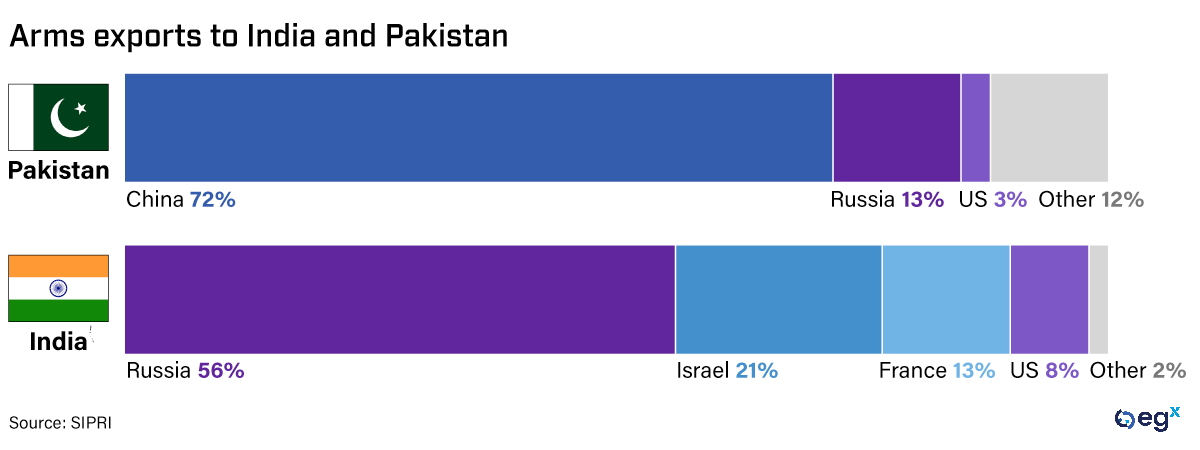
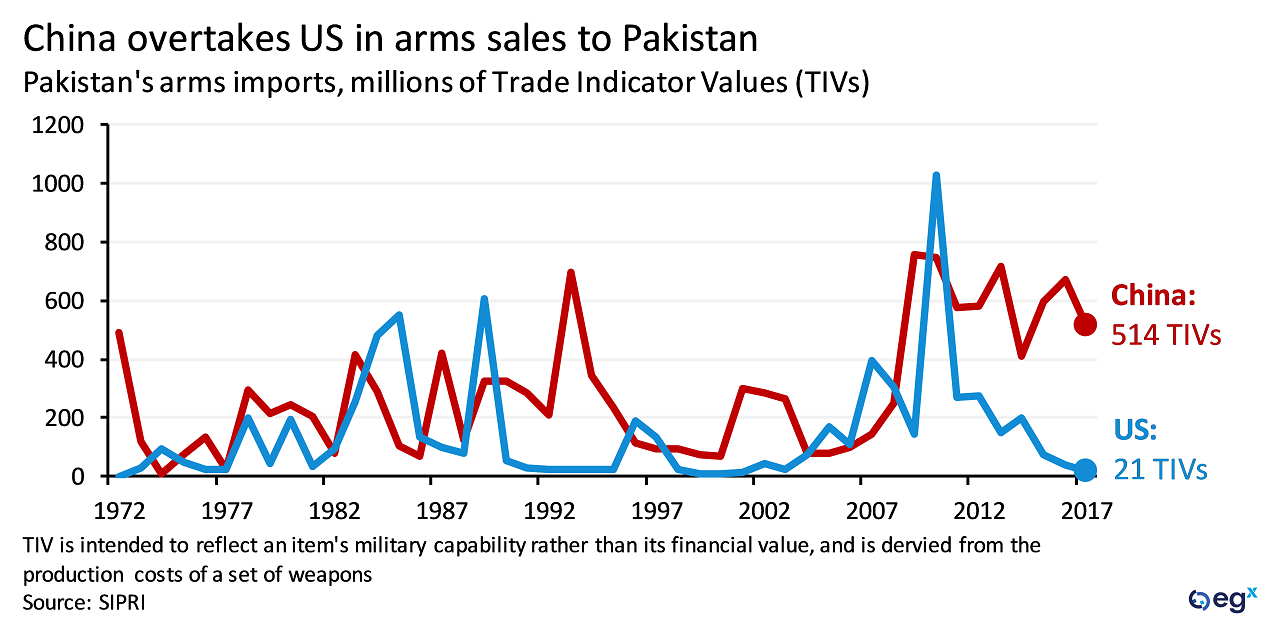
The US position in the situation is complex. The administration has increased its scrutiny of Pakistan, causing its influence over the country to wane. Meanwhile, Washington has elevated India to be the lynchpin of its Indo-Pacific strategy, but the recent announcement to remove India's preferential trade status could limit the upside to its efforts.
